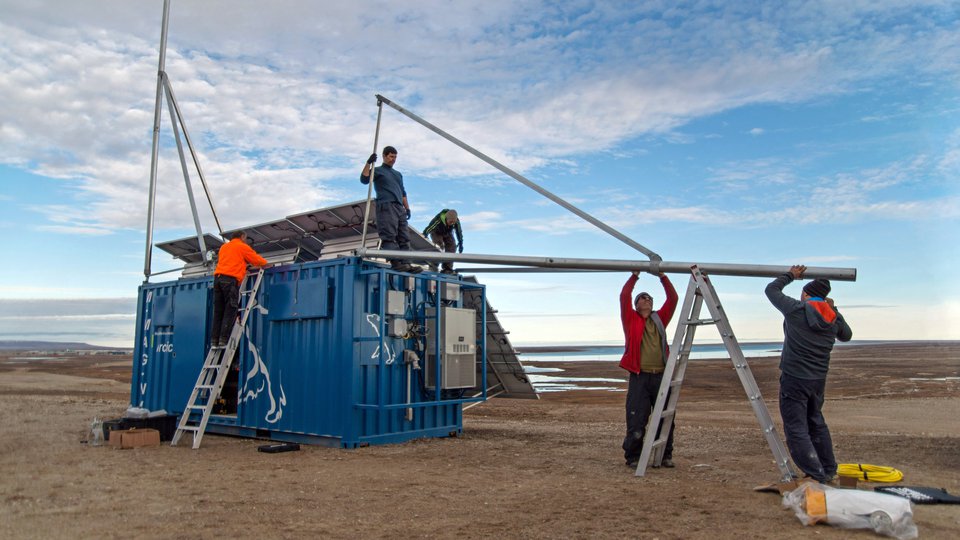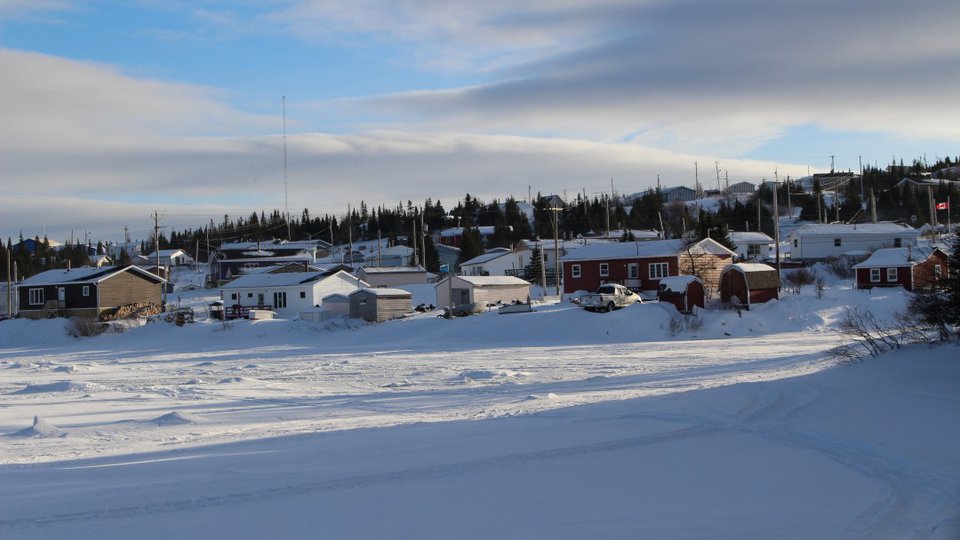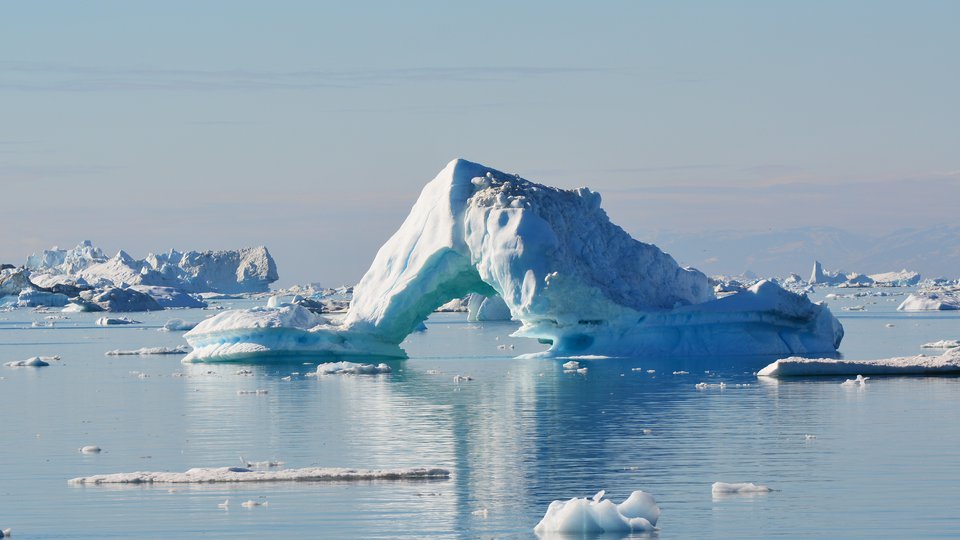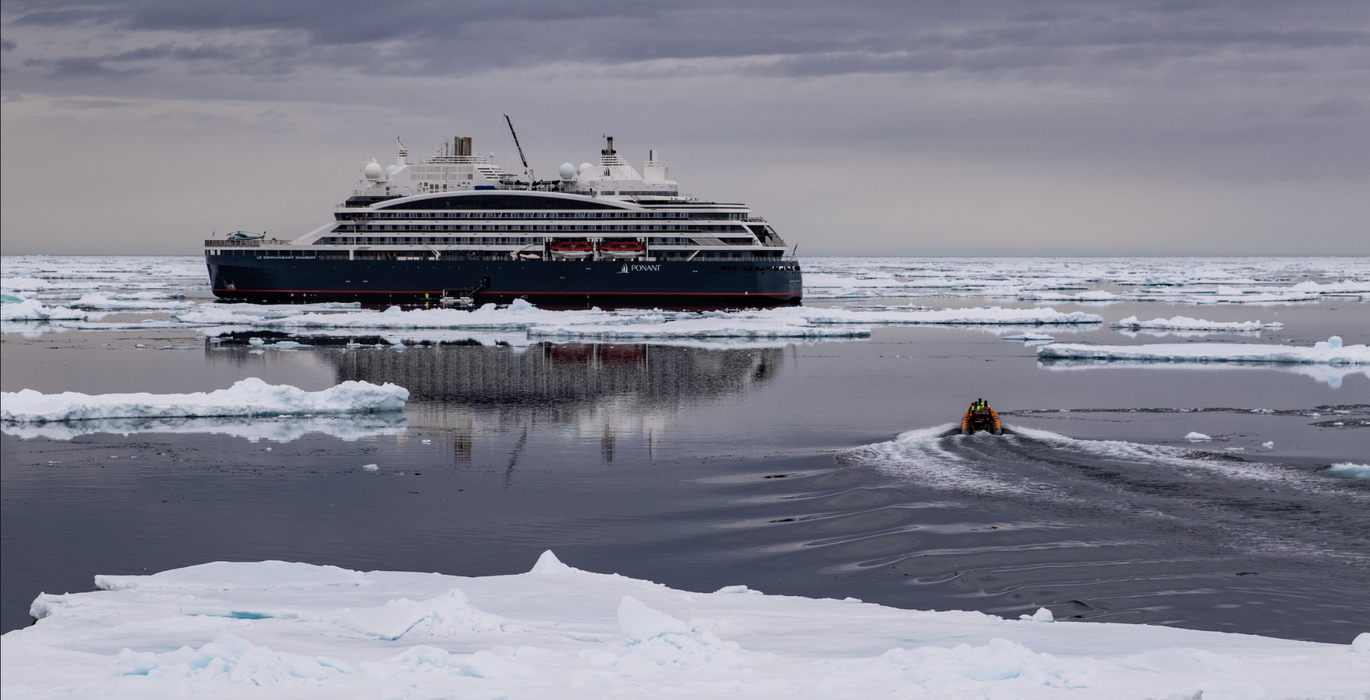
The vibrations and thuds of the ship's hull against pack ice pulls me from sleep at 5:30 AM. The bright sun peeks through the dark curtains over my cabin's windows, — there is 24/hour sunlight at this latitude during this part of the year. I've learned to jump at these moments — when I’m naturally up early and when the light is casting a glow over the ice, revealing the Arctic’s raw beauty.
Grabbing my camera and throwing on my expedition gear, I rush to the outer deck. The cold hits immediately, but the sight before me is worth every shiver. Massive ice sheets stretch to the horizon — their surfaces are painted in amber and rose by the low-angled sunlight. The ship's bow steadily breaks through, creating a path north toward the geographic North Pole. I spend an hour capturing the interplay of light and ice, my fingers gradually numbing despite my gloves.
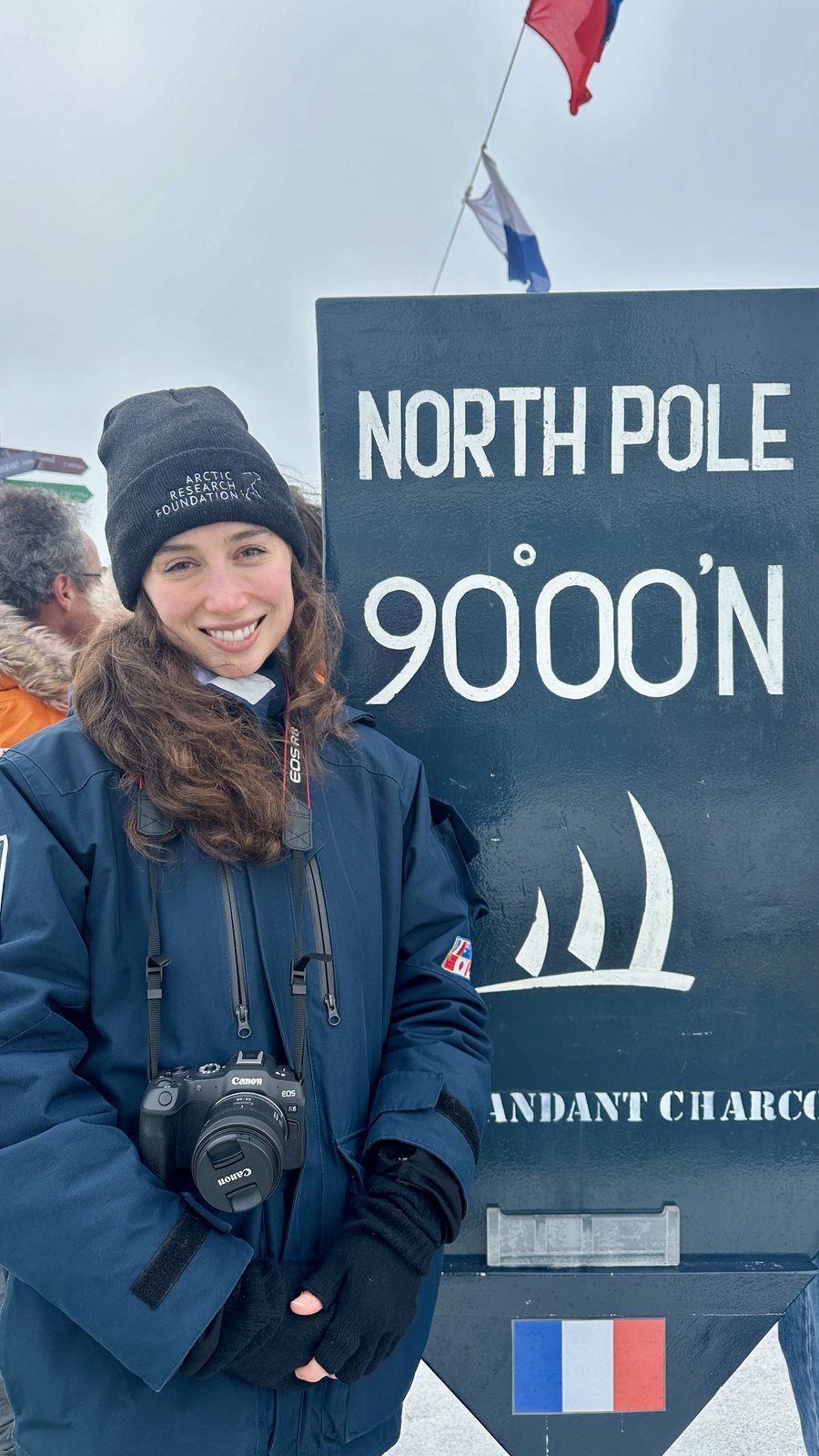
Grace Cordsen's research offers an art-historical perspective on the Arctic, focusing on the visual documentation of regions like Svalbard, the North Pole, and Greenland. (Photo: Grace Cordsen)
I am aboard the Commandant Charcot to carry out research and serve as a journalist and science communicator for the Arctic Research Foundation and Ponant. My research offers an art-historical perspective on the Arctic, focusing on the visual documentation of regions like Svalbard, the North Pole, and Greenland. By analyzing shifts in the portrayal of these landscapes across drawings, paintings, photography, and video, I aim to reveal changes in perception over time and how they reflect the ongoing impacts of climate change. My work strives to highlight how cultural and artistic responses to the Arctic have evolved, illustrating both the beauty and fragility of this critical environment. Before (and after) the voyage, I gathered data by examining archival and contemporary visual materials.
The overall goal of this multidisciplinary approach, is to bring new awareness to the ways art and science intersect in understanding and preserving the Arctic.
By 7 AM, I'm warming up with a strong coffee on the ship's bridge and reviewing my photos. Jakob Bünger — who was here as operational field support for IcySea, the onboard ice survey data collection technology firm — brings my attention back outside.
"We're seeing patterns that might suggest changing currents," he explains, pointing to screens showing ice charts. "The implications for ice formation could be significant."
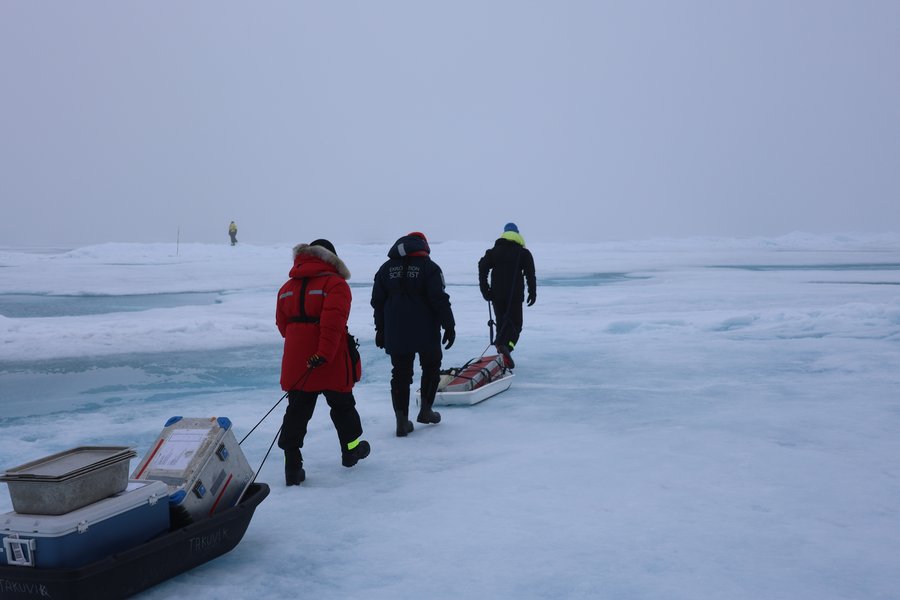
Researchers sledging gear across the ice while collecting ice samples. (Photo: Grace Cordsen)
I make notes — everything Jakob says is eye-opening and will make excellent additions to the article I am writing about his work.
The morning unfolds with a series of interviews. Eric DuPont, Ponant's Head of Science, walks me through the company’s science program. Almost all Ponant’s ships support research of some kind, on this vessel alone we have four different researchers, myself included.
My climate focused art historical and journalistic work differs from the climate science Ponant usually supports, including ice-coring, water sampling, and temperature monitoring.
After lunch, I settle into the ship's lounge to write and read. I'm piecing together a comprehensive story about how different scientific disciplines — from science, to art, to cultural studies, to journalism — intersect here in the high Arctic. The large windows provide a constant view of our progress through the ice, and I find myself periodically looking up to watch our icebreaker at work.
It is during times like this, when I am working in public spaces, that I get to interact and chat with the many other guests onboard. There is a wide variety of characters along for this journey — from passionate explorers, relaxing vacation-goers, to extreme sports enthusiasts.
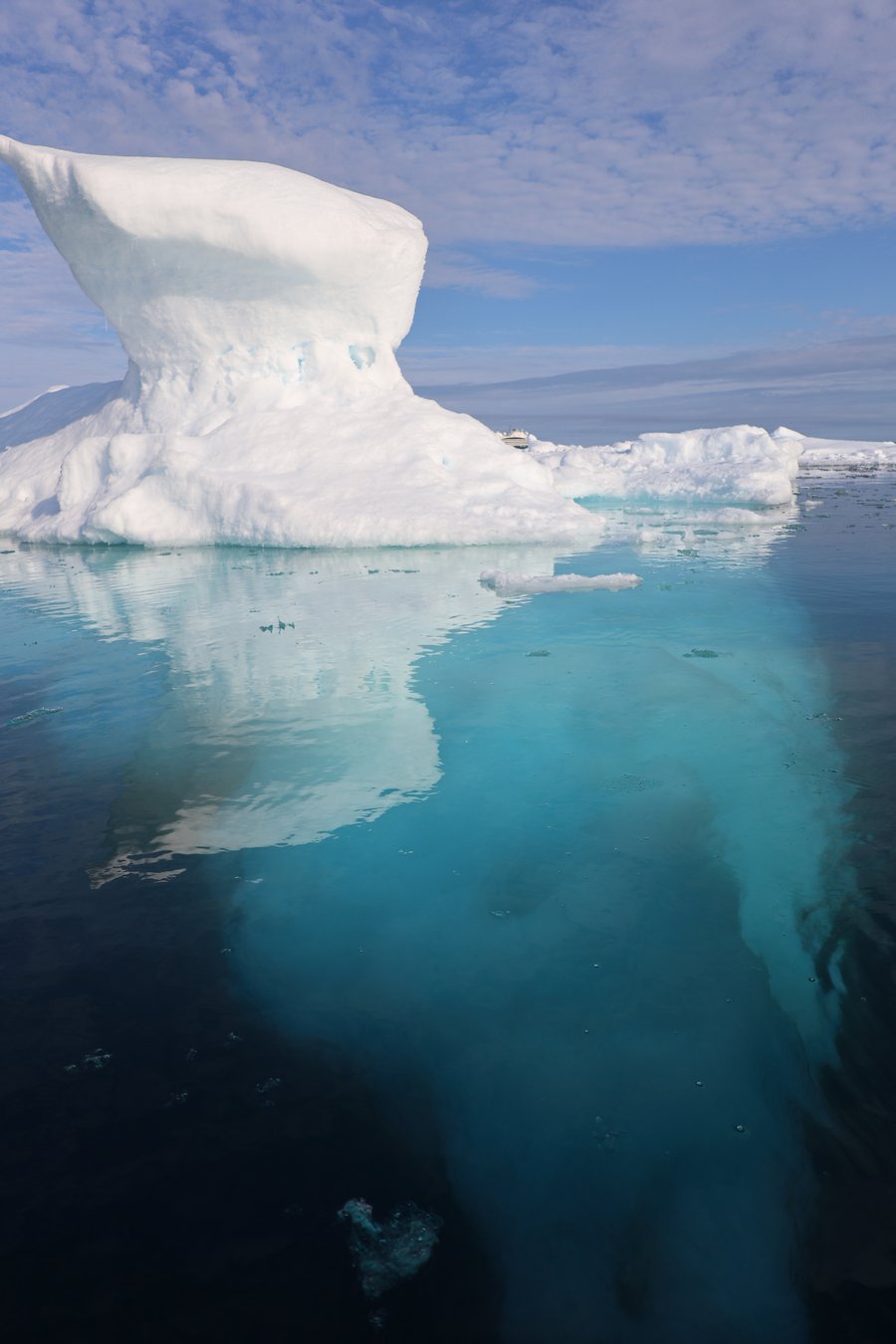
(Photo: Grace Cordsen)
Taking time to chat with everyone about what brought them on a ship to the North Pole was one of my favorite parts of the trip. Throughout the voyage, we witnessed the dramatic changes in Arctic sea ice and ecosystem health, creating a powerful shared experience that, hopefully, will catalyze collective action.
These ship-based conversations with people who've invested significant resources to reach one of Earth's most affected climate regions often reveal deep concern for polar conservation, making it an ideal setting for fascinating conversation about what we can do to protect these vulnerable environments.
The ship's announcement system crackles to life at 3:45 PM, "Ladies and gentlemen, polar bear on the starboard side, approximately 500 meters."
I grab my camera and join the rush to the outside decks. There it is — a magnificent female bear, with two cubs. Through my lens, the mother navigates the vast, icy landscape while her curious cubs playfully explore their surroundings. The stark white ice contrasts with the deep blue ocean, creating a breathtaking backdrop for this intimate family moment, where the mother’s protective instincts are evident as she teaches her young how to survive in this harsh environment.
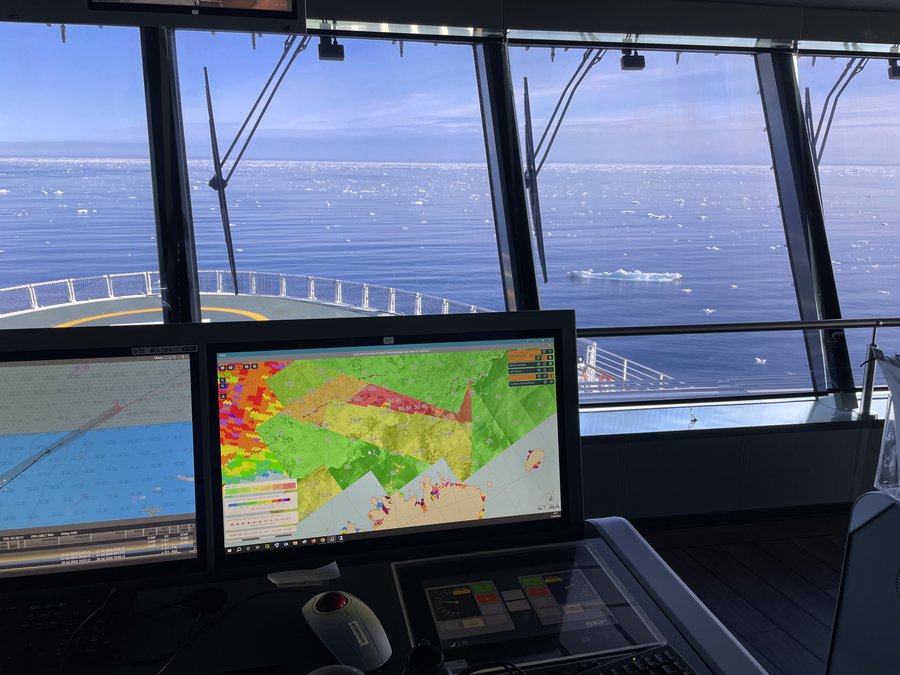
A view from the bridge of the Commandant Charcot. (Photo: Grace Cordsen)
By late afternoon, I need to stretch my legs. I make ten circuits of the ship's outer decks, watching seabirds glide alongside and appreciating how the light changes as the sun circles endlessly overhead. The exercise helps clear my mind before I dive into photo editing — selecting the best shots from both this morning's ice photography and the polar bear encounter.
Dinner is a highlight of these expedition days. I generally eat my meals with the science team in the ship's deck 9 restaurant, where our animated discussions about the day's discoveries are accompanied by expertly prepared French food.
As the evening stretches on, we move to the bar and lounge. Through the panoramic windows, the ice field glows with surreal beauty under the permanent daylight. It is always hard to remember to go to bed on nights like this where the light is omnipresent, and the company is great.
Back in my cabin, I make a few final notes before bed. The ship's movement through the ice creates a soothing rhythm, and I drift off thinking about how fortunate I am to document this intersection of human curiosity and natural wonder. Tomorrow will bring new discoveries, but tonight, surrounded by ice at the top of the world, I'm exactly where I want to be.
